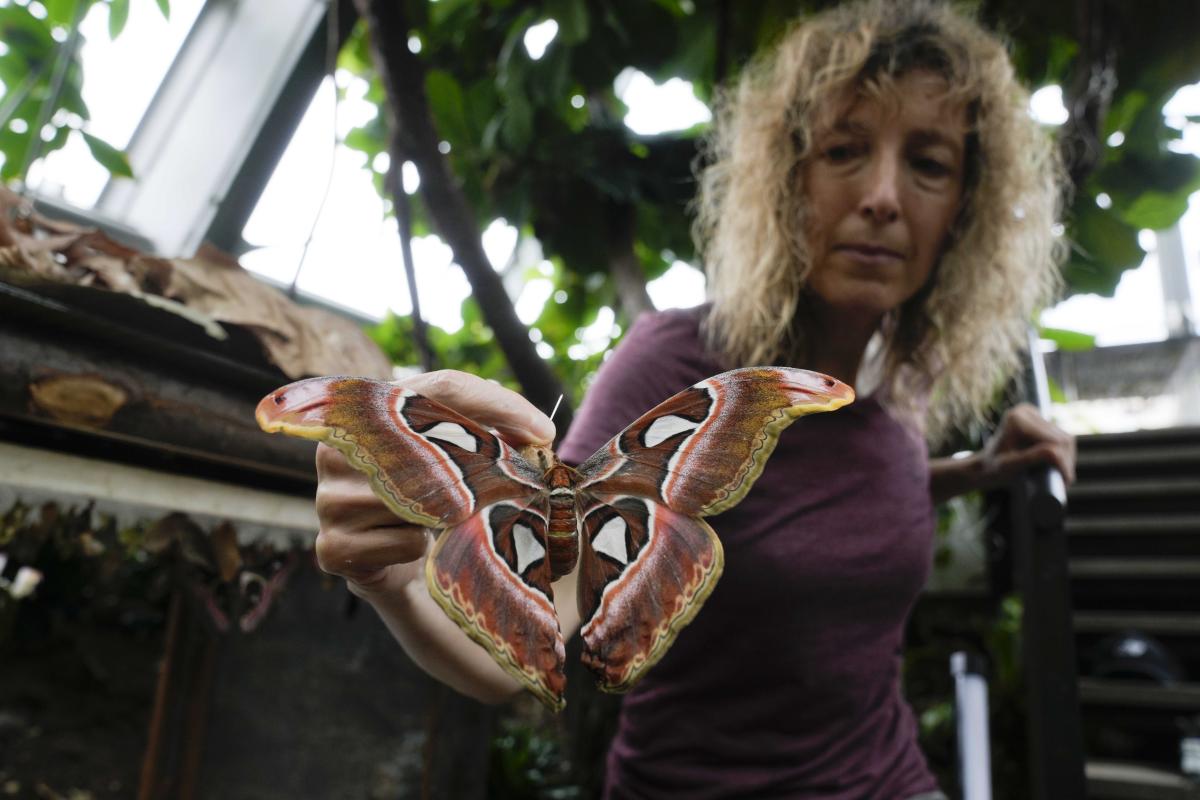TRENTO, Italy (AP) — In a lush greenhouse high in the Alps, butterflies of different species and colors flutter freely as butterfly pupae hang in a structure as they grow into adult insects.
This is the Butterfly Forest in the Tropical Mountain Greenhouse in Trento, Italy, a project of the Museo delle Scienze (MUSE), an Italian science museum. It is modeled after the Udzungwa Mountains, a mountain range and rainforest area in south-central Tanzania that is one of the world’s biodiversity hotspots. In the Butterfly Forest you will find plant species endemic to the region, as well as birds, reptiles, amphibians, fish and invertebrates from different parts of the world, all in a 600 square meter forest with cliffs, slopes and a waterfall.
The Butterfly Forest was created this spring to raise public awareness of some of the research MUSE is doing in the Udzungwa Mountains to study and protect the world’s biodiversity from threats such as deforestation and climate change.
Deforestation leads to habitat loss, which reduces nectar sources for butterflies, altering the functioning of the ecosystem. It can also restrict the insects’ movements, reducing biodiversity and potentially causing vulnerable butterfly species to become extinct. Changes in soil and air temperatures alter the life cycles of the insects, affecting their development rates, mating behavior and migration patterns. Butterfly populations are declining in many areas, especially in places with intensive land use.
“Our goal is to study better, to better understand what is happening,” says Lisa Angelini, botanist and director of the MUSE greenhouse. “Our work consists of monitoring and trying to develop projects to draw attention to biodiversity-related issues.”
Butterflies are pollinators that enable plants to reproduce and thus facilitate food production and supply. They are also food for birds and other animals.
Because of butterflies’ many roles in the ecosystem and their high sensitivity to environmental changes, scientists use them as indicators of biodiversity and as a way to study the impact of habitat loss and other threats. “Insects in general play a fundamental role in the proper functioning of ecosystems,” says Mauro Gobbi, entomologist and researcher at MUSE.
Through a partnership with the Tanzania National Parks Authority, MUSE established the Udzungwa Ecological Monitoring Center in 2006 to support research and the development of environmental education programs for schools.
“Research on butterflies is essential for informing conservation efforts and ensuring the long-term survival of the insects,” said Arafat Mtui, research coordinator at the Udzungwa Ecological Monitoring Centre. Conservation efforts such as habitat restoration and good land management practices, which address the impacts of climate change, are essential for protecting butterfly populations, he added.
With at least 2,500 plant species, more than 120 mammals and thousands of invertebrate species, the Udzungwa Mountains are rich in biological diversity. It is part of the Eastern Arc Mountains of Kenya and Tanzania, a UNESCO World Heritage Site. It has over 40 endemic species of butterflies.
MUSE’s work here is critical because of this diversity, says Sevgan Subramanian, chief scientist and head of environmental health at the International Center of Insect Physiology and Ecology in Nairobi.
“If you want to monitor the health of the ecosystem, monitoring such native or endemic diversity of insect populations is very crucial so that we have an idea whether the ecosystem is still healthy or not,” he said.
Gobbi, the entomologist, said high-altitude environments such as the Udzungwa Mountains National Park are suitable for studying the effects of climate change because they usually have no direct human impact.
He and other scientists have warned that failure to protect insects from the effects of climate change will drastically reduce the planet’s ability to build a sustainable future.
MUSE scientists say the biggest challenge in butterfly conservation is changing current agricultural policies to increase the amount of low-intensity agricultural land and promote diverse landscapes while preserving the remaining patches of natural habitat.
“Our grandparents often said there aren’t as many butterflies as there used to be,” he said. This is “absolutely backed by scientific research, which confirms that butterflies, like other insects, are in crisis. We are losing species, we are losing them forever, and this will break the balance of ecosystems.”
___
Mureithi reported from Nairobi, Kenya.
___
The Associated Press’ climate and environmental reporting receives funding from several private foundations. AP is solely responsible for all content. Find AP’s Standards for Working with Charities, a list of supporters, and funded coverage areas at AP.org.


